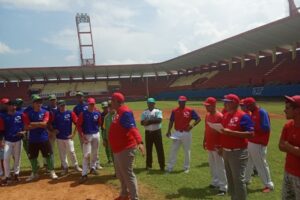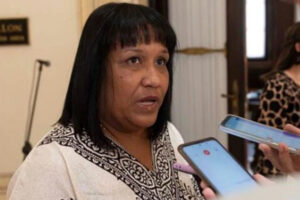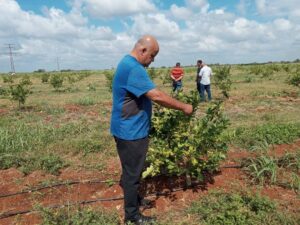A Cuban in the Cosmos! That was the phrase heard most on 18 September 1980, when Cuban television and radio announced that the Soyuz 38 spacecraft carrier rocket had launched that day from Baikonur, in the then Soviet Republic of Kazakhstan, with a crew comprising the Soviet Yuri Romanenko and the Cuban Arnaldo Tamayo Méndez.
After concluding the historic journey, Fidel Castro stated: “Arnaldo Tamayo represented in the cosmos Cuba, Latin America, Africa, and the Third World”.
The rocket would place the spacecraft into orbit, which would later transfer them to the Salyut-6 complex.
Upon arriving at the space station, Tamayo and Romanenko met with cosmonauts Leonid Popov and Valeri Ryumin to undertake a series of experiments for a week.
The Guantanamo-native of humble origin, with the collaboration of his colleagues, executed 27 projects developed by Cuban and Soviet scientists and experts, which followed on from others initiated by cosmonauts from Bulgaria and Hungary.
The majority of this research and experimentation programme was handled by the National Academy of Sciences of Cuba, including the cultivation of the first organic monocrystals in microgravity using Cuban sugar.
And furthermore, notable research was conducted on the causes of space adaptation syndrome and the exploration of the national territory to gain a deeper understanding of the subsoil riches of the Caribbean nation.
One of the historic moments came from the words in Spanish spoken by Tamayo from the Salyut-6 station, because for the first time in history the language of Cervantes was heard from outside Earth.
Subsequently, the bi-national crew transferred samples from the research to the descent module and departed on their return journey on 25 September, landing on the 26th.
In total, they completed 124 orbits around Earth and remained in the cosmos for 7 days, 20 hours, 43 minutes and 24 seconds.
This was the seventh international crew of the Intercosmos programme, with the participation of member countries of the then Council for Mutual Economic Assistance (CMEA): Bulgaria, Cuba, Czechoslovakia, Hungary, Mongolia, Poland, GDR, Romania and the Soviet Union.
Tamayo became the first Latin American to travel to space and the 97th human to fly into the upper atmospheres of the universe.
The Cuban cosmonaut was born in 1942 into a humble Afro-descendant family. From a very young age, and being an orphan, he began to work, and at 13 years old he earned a living as a shoeshine boy, carpenter’s assistant, and newspaper seller.
After the triumph of the Revolution on the first of January 1959, he enrolled in the Rebel Army Technical Institute and later joined the Revolutionary Armed Forces. He became a combat pilot and underwent training for the Mig-15 fighter jet in the Soviet Union at the age of 19.
Today, aside from his work as a deputy of the National Assembly of the People’s Power, the now brigadier general serves as head of the Foreign Relations Department of the Revolutionary Armed Forces of Cuba (Minfar) and director within the Cuban Civil Defence organisation.
On 24 July 1961, Yuri Gagarin arrived in Cuba and prophesied: “The day will come when a son of the Cuban people will also travel to the cosmos”, a phrase Tamayo would later recall.
The feat of travelling to outer space and working on scientific research positioned, at that time, a Third World nation among the first nine participants in cosmic voyages.
On the 33rd anniversary of that event, Romanenko stated that the shared flight with Arnaldo Tamayo made them brothers on Earth and in the cosmos, and ambassadors of the two countries. (Mando Arreola, ACN)




